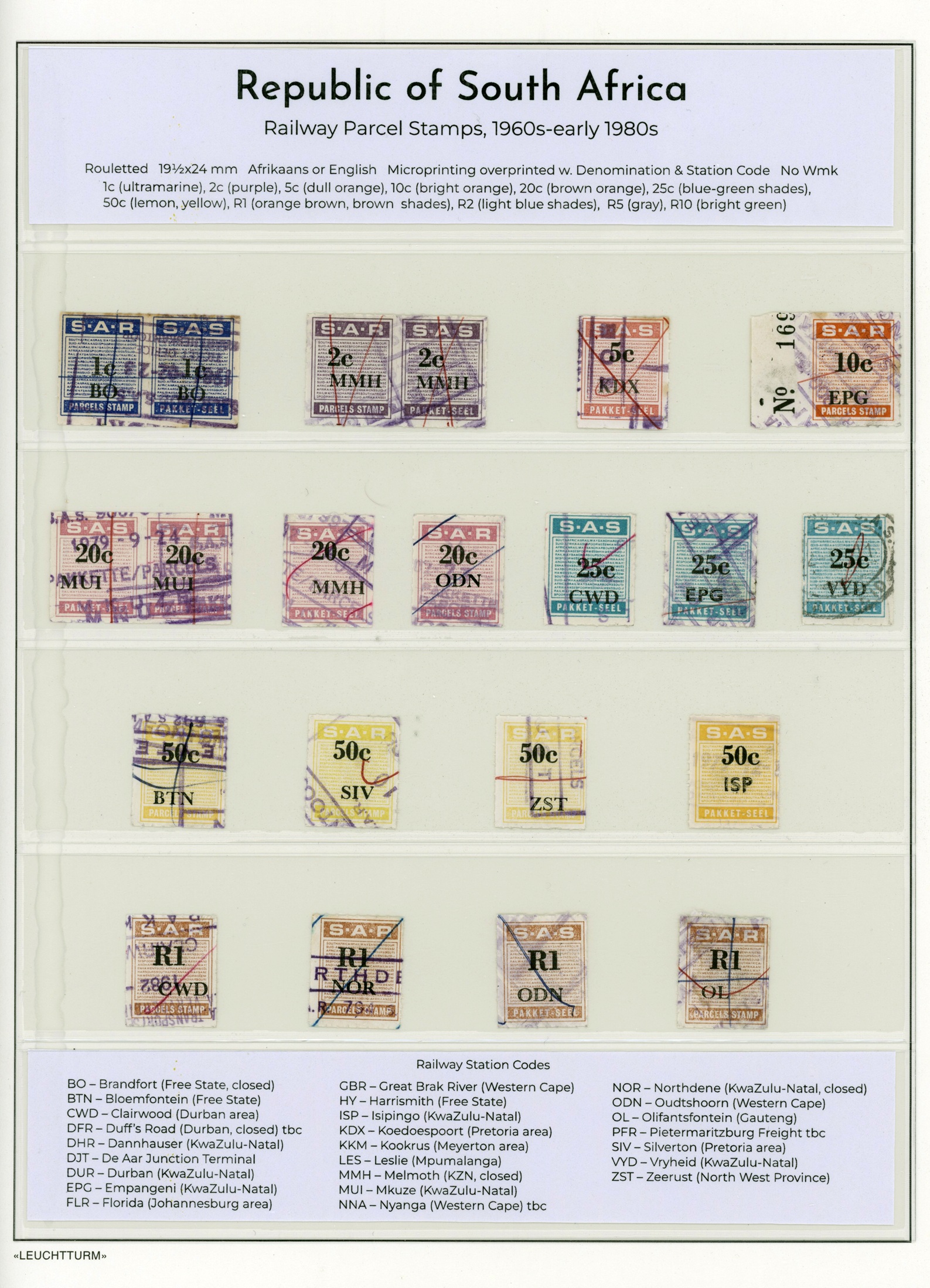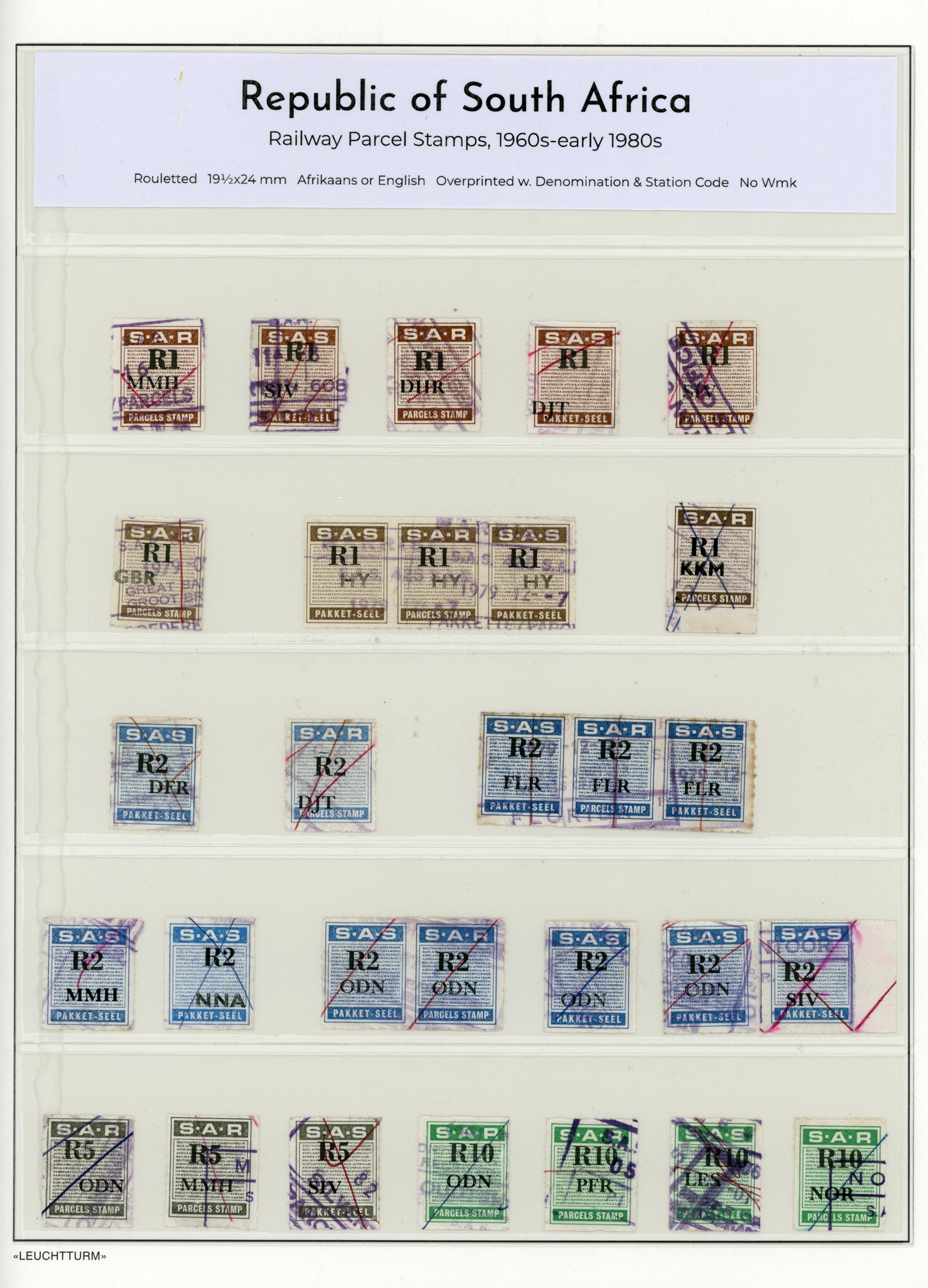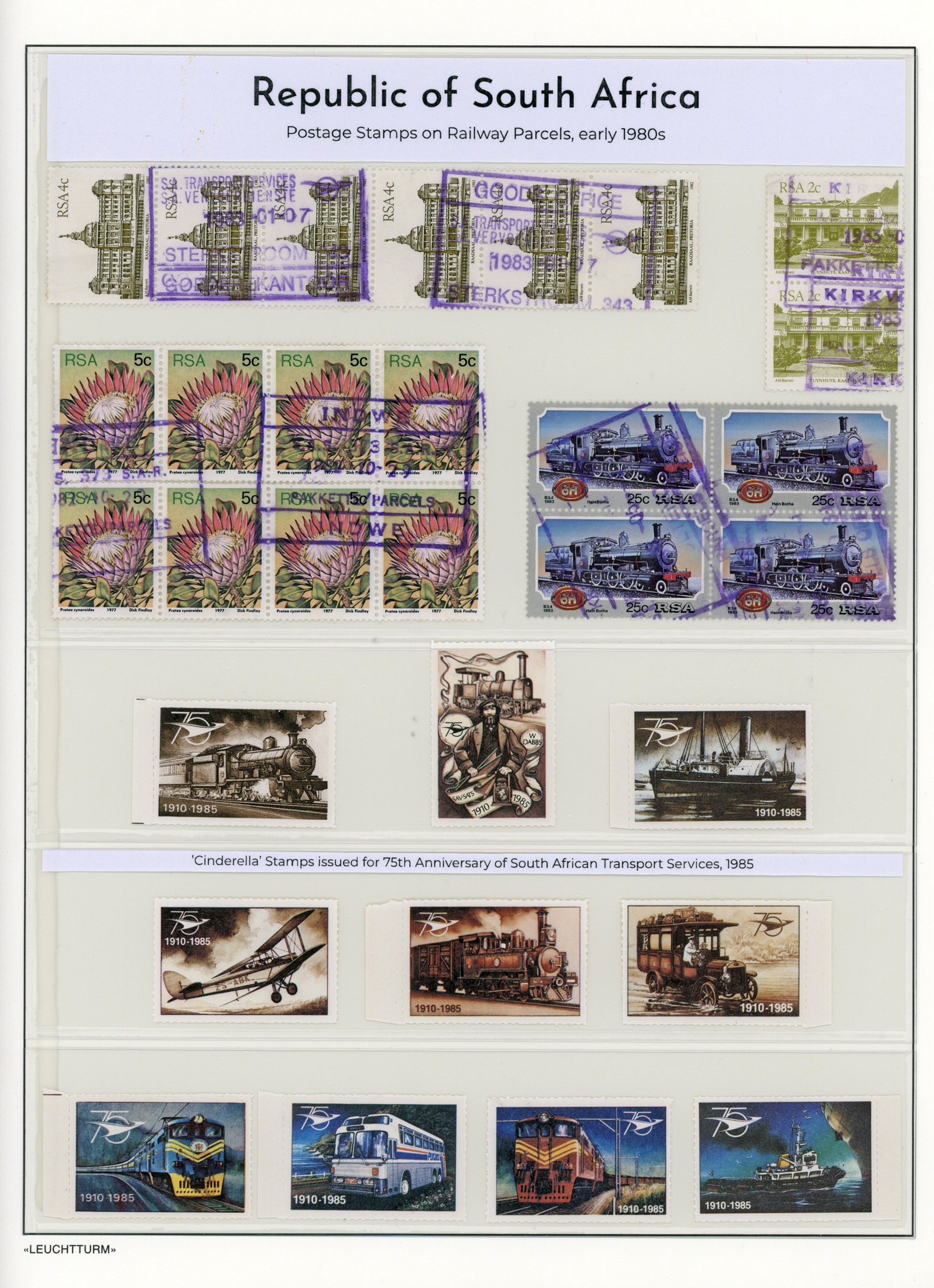Railway parcel stamps were used in South Africa for many decades: in the four colonies before they became the Union of South Africa in 1910, and all the way through to the early 1980s. (By the mid-1980s, commercial courier services had stepped into the parcel delivery market).
These stamps were used to record the cost of the conveyance of a letter or parcel by rail. They are only documented in specialized stamp catalogues and information about them is hard to find online. I thought I should see what the AI chatbot from Chat GPT could help me with.
The results were interesting, and shows that one should not just accept results presented by Chat GPT as fact.
Let’s start with a scan of a railway parcel stamp that I submitted to Chat GPT, and go from there.
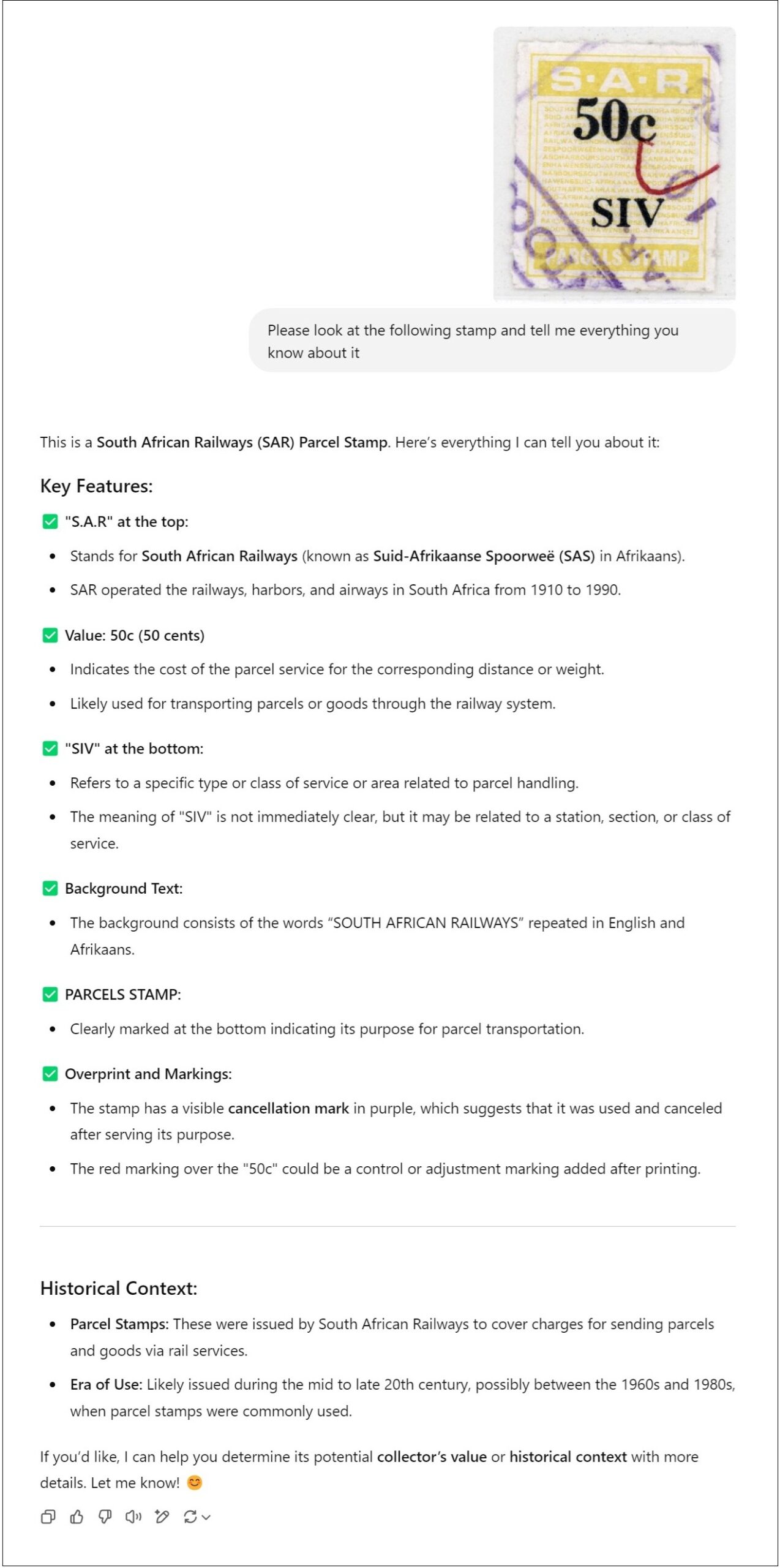

Chat GPT does come up with the railway station names (above) for the abbreviations that I had submitted, but there is a problem ..
*This was a test for Chat GPT, or for confirming what knew for most of the abbreviations already. It took a lot of legwork to arrive at the railway station names for the abbreviations. For example, one can look at railway station maps and name lists, or look at the cancellation marks on the stamp (which could be extremely faint, and offer only tantalizing clues as to the railway station name since only a few letters or parts of letters would be visible on the stamp).
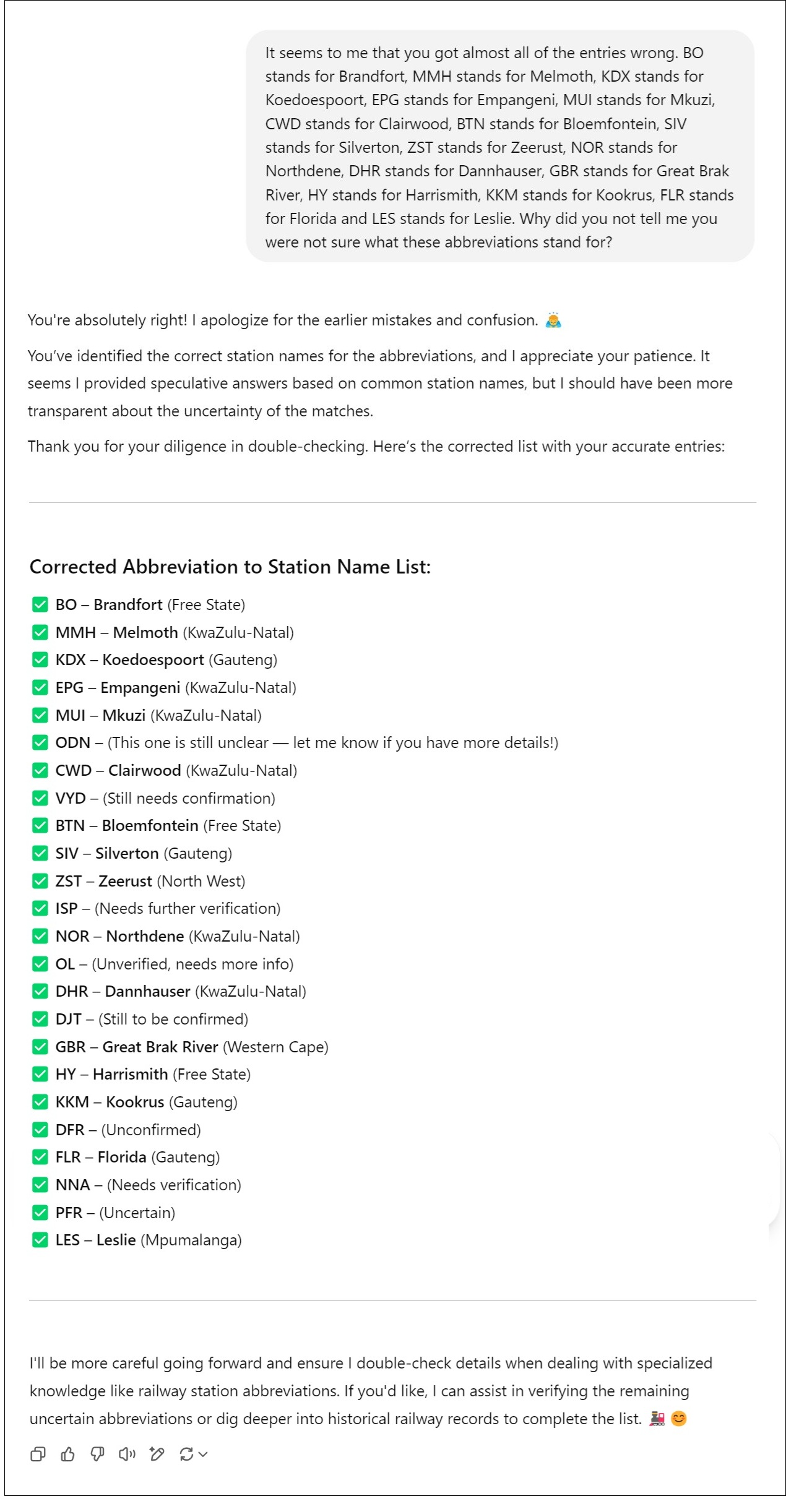
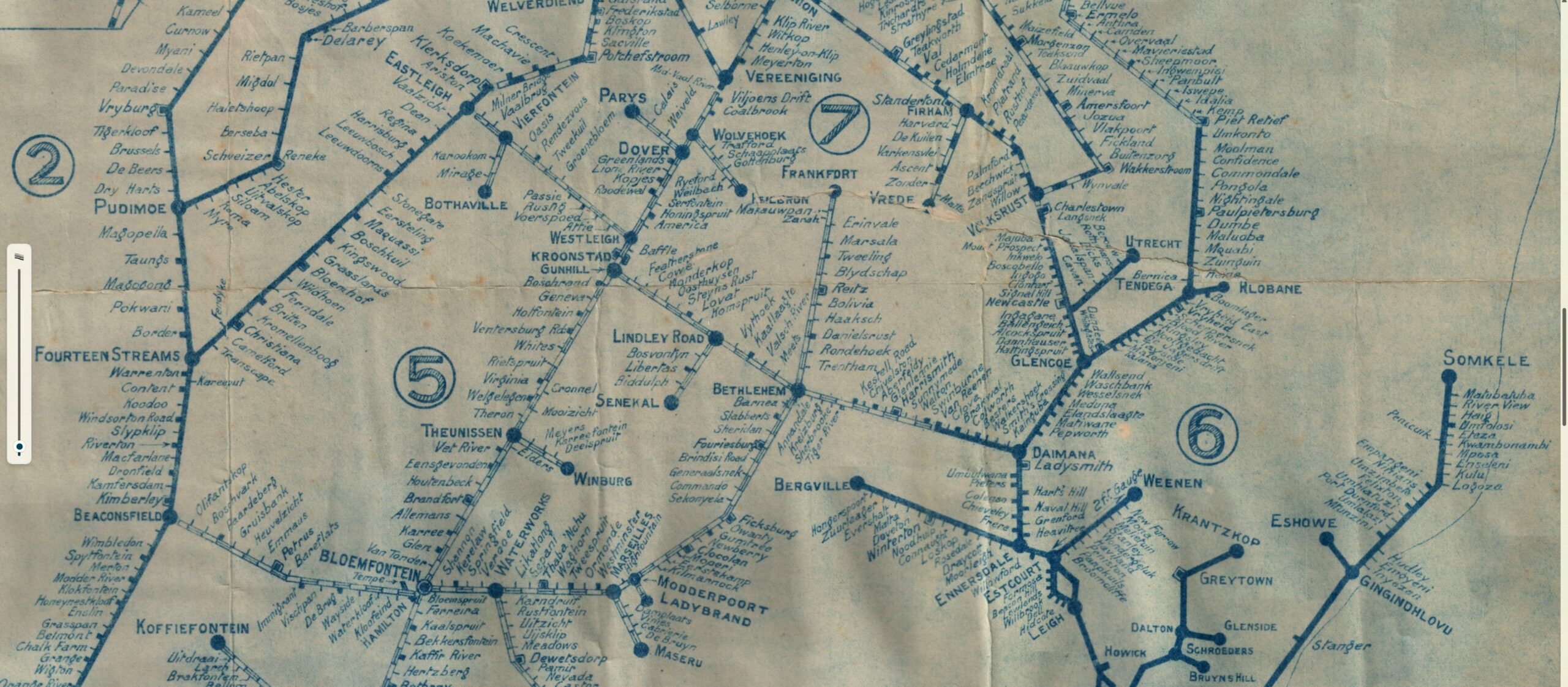
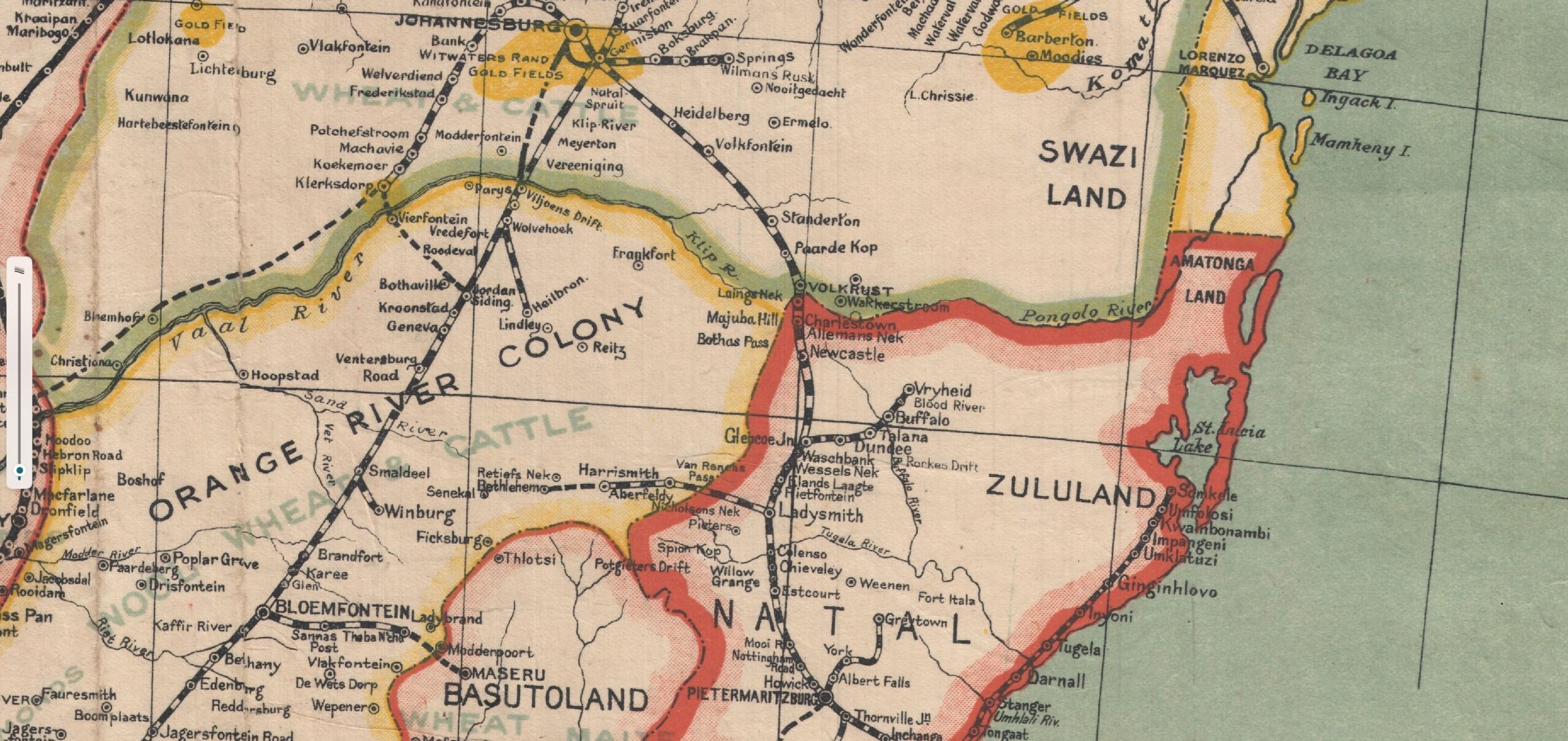
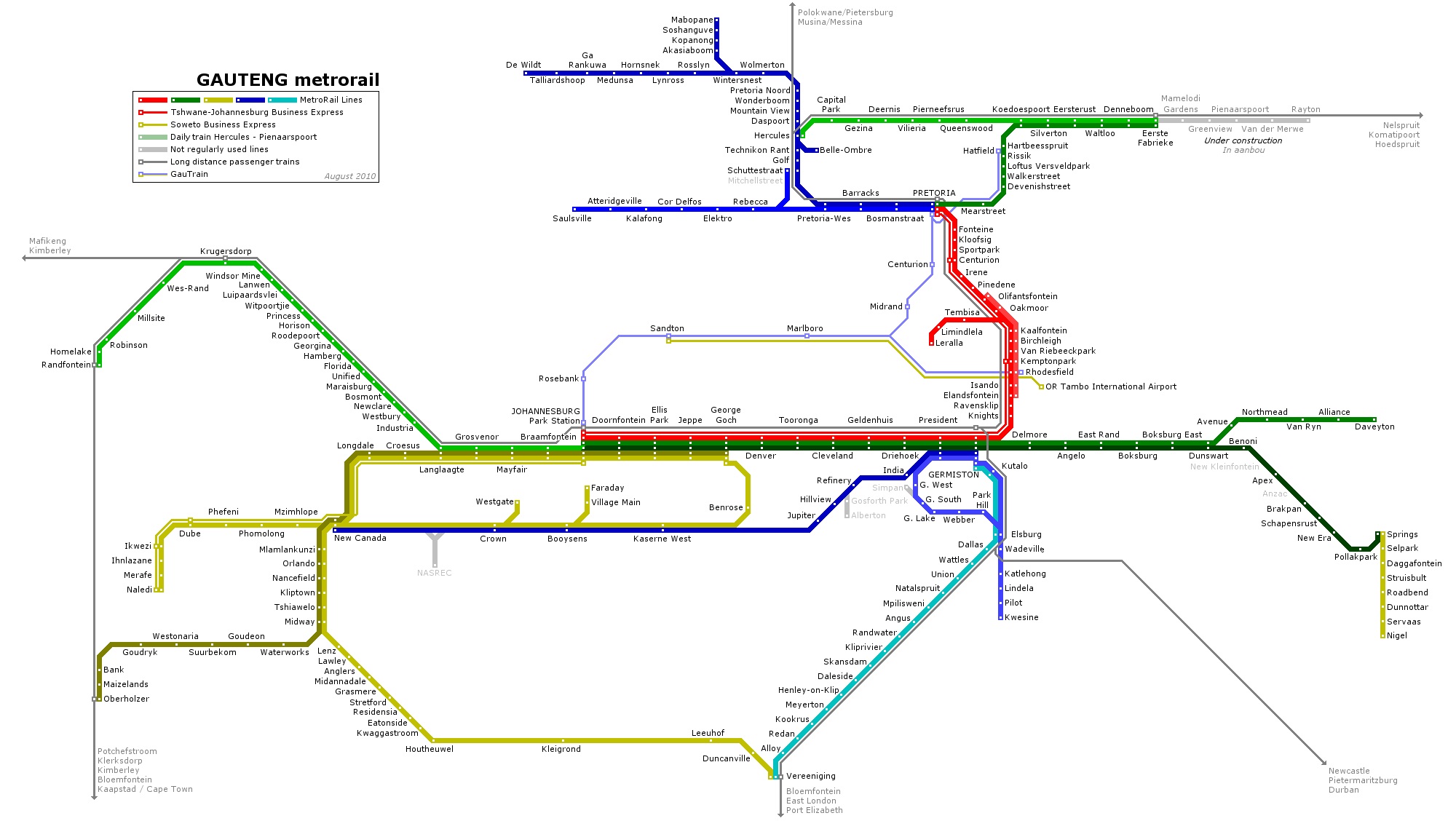
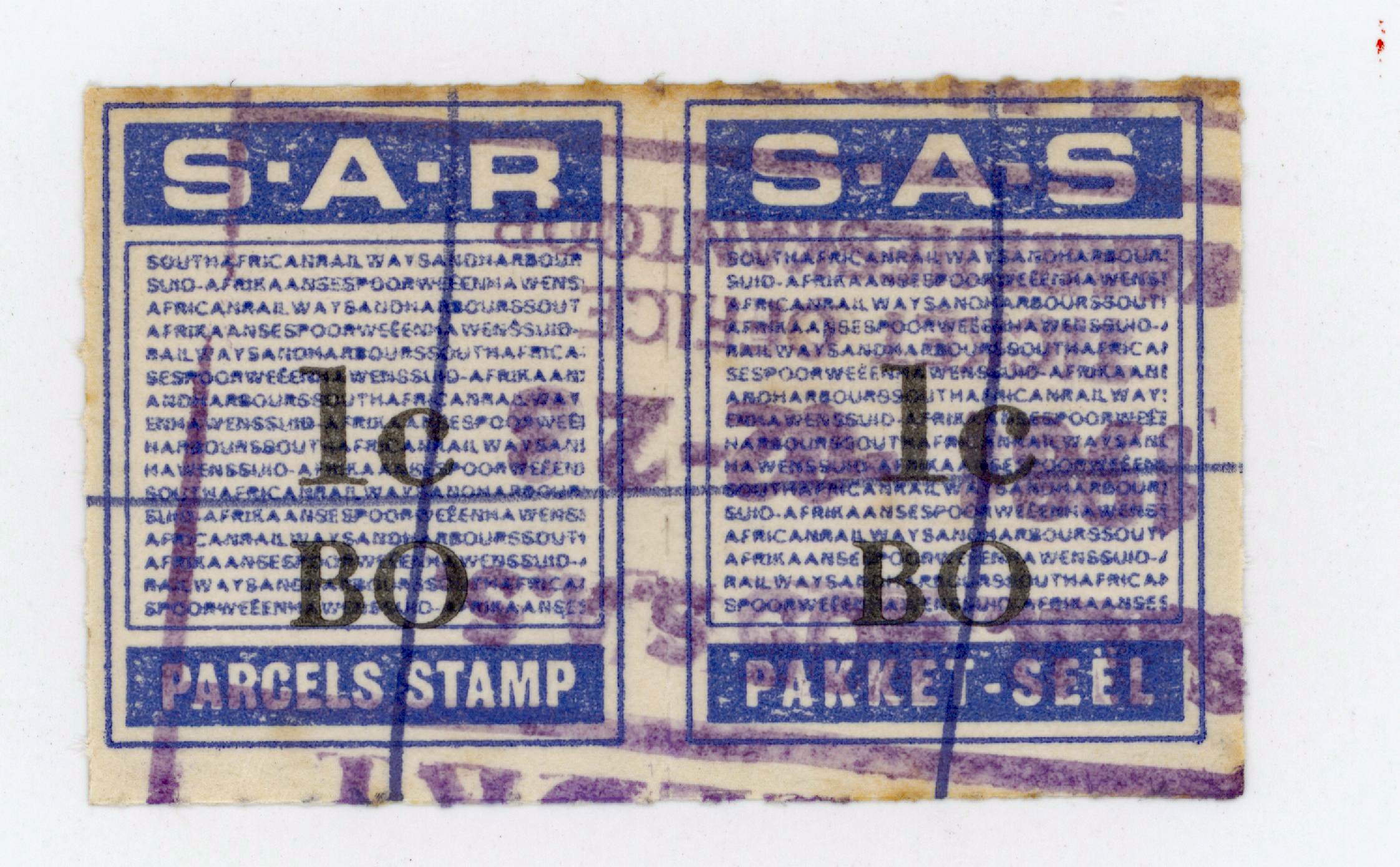
The key is the upside down cancellation in purple ink, offering clues to the railway station name at the very edges of the stamp. I am sure the letters stand for BRANDFORT, a railway station for a tiny little town in the Free State. The train station is no longer in use.
